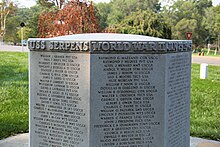
American Airlines Flight 77 was a scheduled domestic transcontinental passenger flight from Dulles International Airport in Northern Virginia to Los Angeles International Airport in Los Angeles. The Boeing 757-200 aircraft serving the flight was hijacked by five al-Qaeda terrorists on the morning of September 11, 2001, as part of the September 11 attacks. The hijacked airliner was deliberately crashed into the Pentagon in Arlington County, Virginia, killing all 64 aboard and another 125 in the building.

The first memorials to the victims of the September 11 attacks in 2001 began to take shape online, as hundreds of webmasters posted their own thoughts, links to the Red Cross and other rescue agencies, photos, and eyewitness accounts. Numerous online September 11 memorials began appearing a few hours after the attacks, although many of these memorials were only temporary. Around the world, U.S. embassies and consulates became makeshift memorials as people came out to pay their respects.

The Tomb of the Unknown Soldier is a historic funerary monument dedicated to deceased U.S. service members whose remains have not been identified. It is located in Arlington National Cemetery in Virginia, United States. The World War I "Unknown" is a recipient of the Medal of Honor, the Victoria Cross, and several other foreign nations' highest service awards. The U.S. Unknowns who were interred are also recipients of the Medal of Honor, presented by U.S. presidents who presided over their funerals. The monument has no officially designated name.

Arlington National Cemetery is one of two cemeteries in the United States National Cemetery System that are maintained by the United States Army. Nearly 400,000 people are buried in its 639 acres in Arlington County, Virginia.

Burial at sea is the disposal of human remains in the ocean, normally from a ship, boat or aircraft. It is regularly performed by navies, and is done by private citizens in many countries.
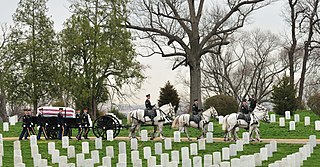
A military funeral is a memorial or burial rite given by a country's military for a soldier, sailor, marine or airman who died in battle, a veteran, or other prominent military figures or heads of state. A military funeral may feature guards of honor, the firing of volley shots as a salute, drumming and other military elements, with a flag draping over the coffin.
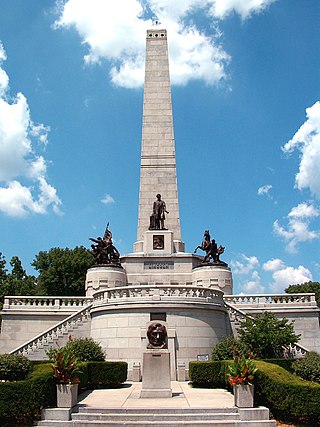
The Lincoln Tomb is the final resting place of Abraham Lincoln, the 16th president of the United States; his wife Mary Todd Lincoln; and three of their four sons: Edward, William, and Thomas. It is located in Oak Ridge Cemetery in Springfield, Illinois.

After Abraham Lincoln was assassinated on April 14, 1865, a three-week series of events was held to mourn the death and memorialize the life of the 16th president of the United States. Funeral services, a procession, and a lying in state were first held in Washington, D.C., then a funeral train transported Lincoln's remains 1,654 miles (2,662 km) through seven states for burial in Springfield, Illinois. Never exceeding 20 mph, the train made several stops in principal cities and state capitals for processions, orations, and additional lyings in state. Many Americans viewed the train along the route and participated in associated ceremonies.
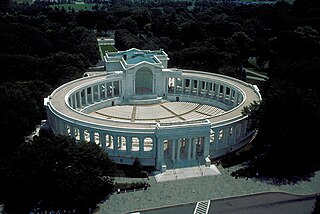
Memorial Amphitheater is an outdoor amphitheater, exhibit hall, and nonsectarian chapel located in Arlington National Cemetery in Arlington County, Virginia, in the United States. It was designed in 1913 as a replacement for the older, wooden amphitheater near Arlington House. Ground was broken for its construction in March 1915 and it was dedicated in May 1920. In the center of its eastern steps is the Tomb of the Unknown Soldier, dedicated in 1921. It has served as the site for numerous Veterans Day and Memorial Day events, as well as for memorial services and funerals for many individuals.

The Pentagon Memorial, formally the National 9/11 Pentagon Memorial, located just southwest of the Pentagon in Arlington County, Virginia, across the Potomac River from Washington, D.C., is a permanent outdoor memorial to the 184 people who died as victims in the building and on American Airlines Flight 77 during the September 11 attacks.

Natural burial is the interment of the body of a dead person in the soil in a manner that does not inhibit decomposition but allows the body to be naturally recycled. It is an alternative to typical contemporary Western burial methods and modern funerary customs.
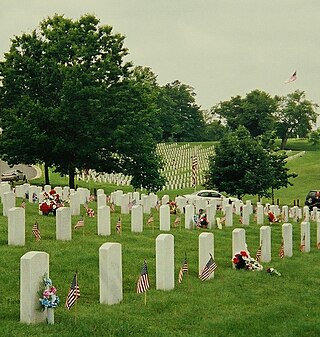
Camp Nelson National Cemetery is a United States National Cemetery located in southern Jessamine County, Kentucky. It was originally a graveyard associated with the U.S. Army's Camp Nelson, which was active during the U.S. Civil War and its aftermath. The camp was named for Major General William "Bull" Nelson, commander of the Civil War Army of Kentucky, who was murdered by a fellow officer in 1862.

Michael Joseph Blassie was a United States Air Force officer who was killed in action during the Vietnam War in May 1972. Prior to the identification of his remains, Blassie was the unknown service member from the Vietnam War buried at the Tomb of the Unknown Soldier at Arlington National Cemetery. After his remains were identified by DNA testing in 1998, they were reburied at Jefferson Barracks National Cemetery in St. Louis County, Missouri.
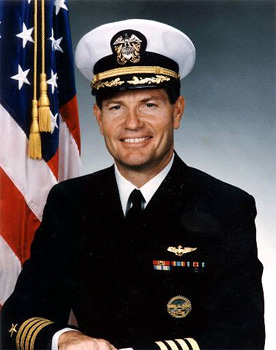
Charles Frank "Chic" Burlingame III was the Captain of American Airlines Flight 77, the aircraft that was crashed by terrorists into the Pentagon during the September 11 attacks.
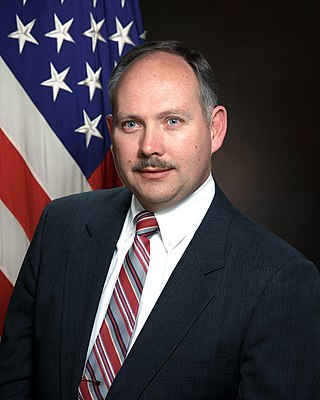
John C. Metzler Jr. is an American civil servant who was Superintendent of Arlington National Cemetery in Arlington, Virginia, from 1991 to 2010. He achieved notoriety in the press at the end of his tenure due to the Arlington National Cemetery mismanagement controversy.

In the United States, state funerals are the official funerary rites conducted by the federal government in the nation's capital, Washington, D.C., that are offered to a sitting or former president, a president-elect, high government officials and other civilians who have rendered distinguished service to the nation. Administered by the Military District of Washington (MDW), a command unit of the Joint Force Headquarters National Capital Region, state funerals are greatly influenced by protocol, steeped in tradition, and rich in history. However, the overall planning as well as the decision to hold a state funeral, is largely determined by a president and their family.

A military funeral in the United States is a memorial or burial rite conducted by the United States Armed Forces for a Soldier, Marine, Sailor, Airman, Guardian or Coast Guardsman who died in battle, a veteran, or other prominent military figures or a president. A military funeral may feature guards of honor, the firing of volley shots as a salute, drumming and other military elements, with a flag draping over the coffin.

Abbey Mausoleum was a mausoleum in Arlington County, Virginia, in the United States founded in 1924. One of the most luxurious burial places in the Washington, D.C., metropolitan area, many famous individuals, judges, and military leaders were buried there. The mausoleum encountered financial difficulties and declared bankruptcy in 1966. It suffered vandalism numerous times, and several graves were desecrated. Remains buried there were disinterred and reburied elsewhere, and it was demolished in February 2001. Several architectural features of the structure were salvaged. It was located just outside Arlington National Cemetery next to Henderson Hall.

Lawrence Everett Dickson † was an American pilot and a member of the famed group of the World War II-era Tuskegee Airmen. Dickson flew 68 mission in World War II before he was forced to eject from his aircraft over Austria in 1944. Dickson was declared missing in action. On July 27, 2018, Dickson's remains were identified by the Defense POW/MIA Accounting Agency.

